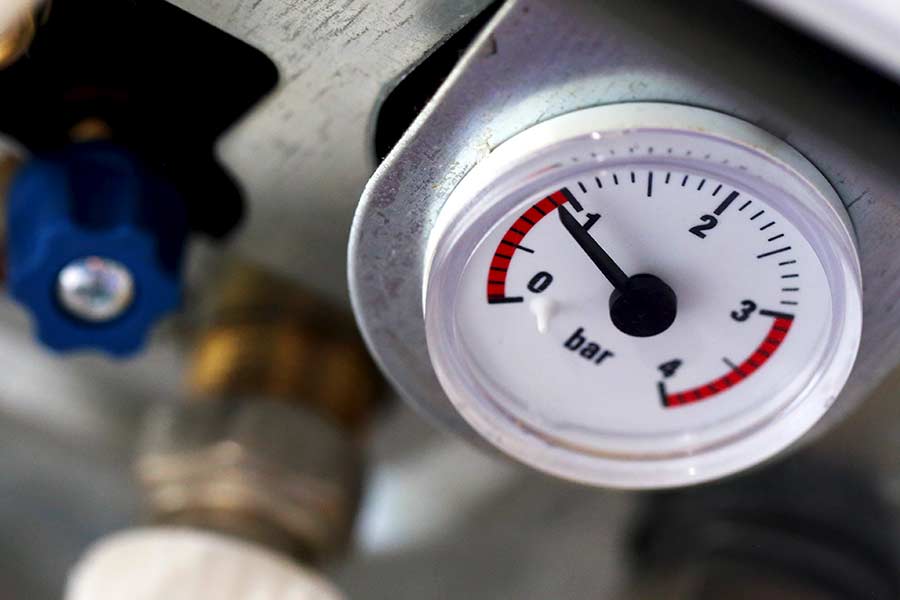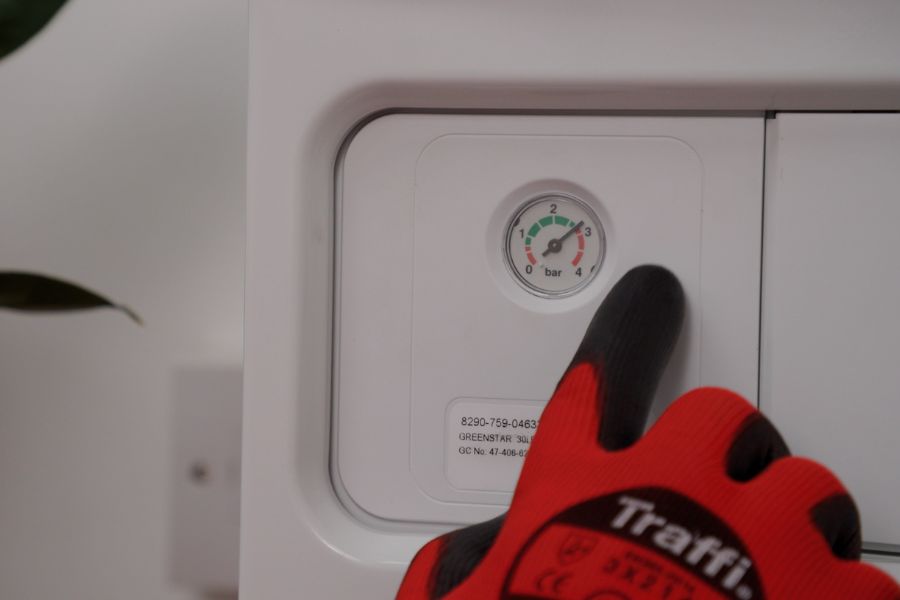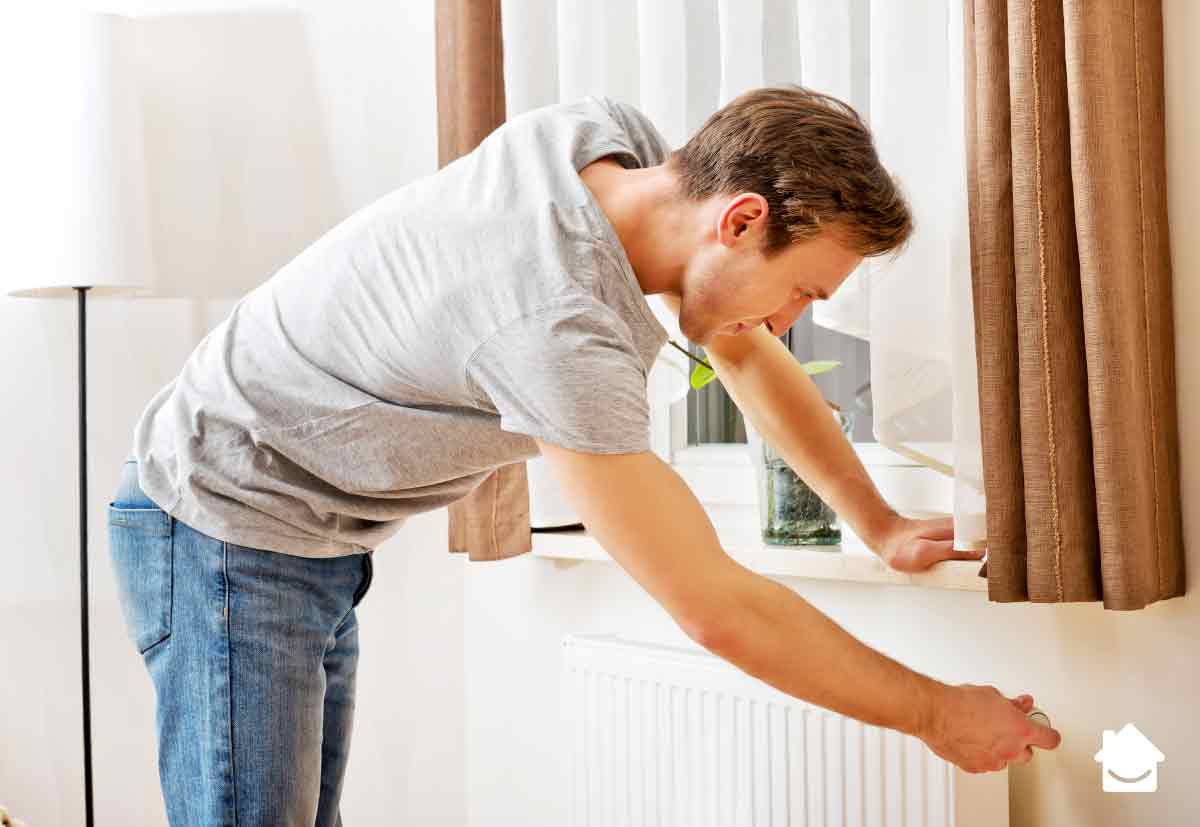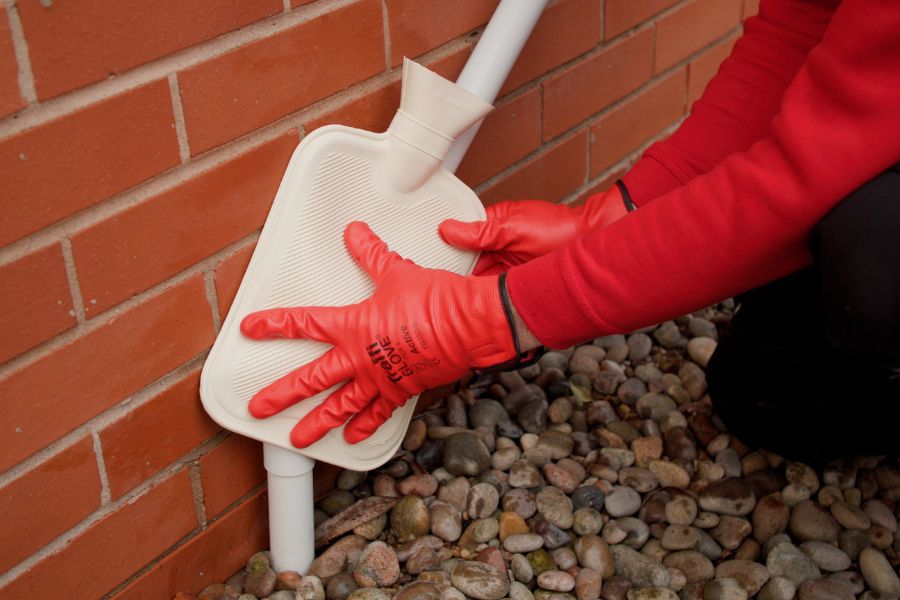Home heating advice
Hot water but no central heating? Here's what to do
04 Nov 2025 • 6 minutes

Home heating advice
04 Nov 2025 • 6 minutes

There’s nothing worse than a warm shower but a freezing living room. If your hot water is running fine, but your radiators are staying cold, don’t panic. In this guide, we’ll walk you through the most common reasons why it happens, what you can do about it, and when you need to get an expert in.

In most boilers, when the system isn’t on, the needle on the pressure gauge of your boiler should sit between 1 and 2 bars. If it’s below 1, the pressure is too low, and this could explain why your radiators aren’t heating up.
Low boiler pressure is one of the most common reasons your heating might not be working, even if you still have hot water. Your boiler needs the right amount of pressure to push hot water through the pipes and into your radiators. Without it, the system can’t circulate properly.
You can usually fix this by repressurising your boiler, which involves carefully topping it up using the filling loop (often a silver flexible hose underneath the boiler). Always check your boiler’s manual first, as the process can vary depending on the make and model.

If the gauge is sitting above 2.5 to 3 bars, your boiler could struggle to work safely and may even switch itself off. High boiler pressure can sometimes happen if you’ve recently topped it up too much, or if there’s a fault with the pressure relief valve.
One quick fix you can try is bleeding your radiators until some water comes out. This can lower the pressure slightly, helping the system return to normal.
If the pressure is consistently too high or keeps rising even after you’ve bled the radiators, don’t try to fix it yourself. This is a job for a professional heating engineer who can safely release the pressure and check for any underlying problems.
Your thermostat controls when the heating turns on and off. If it’s set incorrectly, your radiators won’t heat up. Check that the thermostat is switched on, set to the right temperature, and programmed for the correct times.
If you’ve checked all the settings and your heating still won’t come on, it could be a sign you have a faulty thermostat that may need replacing. In that case, it’s time to bring in a professional to diagnose any issues or replace it.

If your boiler and thermostat seem fine, the next step is to take a look at your radiators. Walk around your home and check each one to see if they’re warming up evenly.
If you’ve already bled your radiators in the previous step and they’re still not heating up properly, the problem could be down to circulation. Sludge or debris inside the system can block hot water from reaching certain radiators, leaving some cold while others work fine.
In cases like this, your central heating may need a power flush. This is a specialist cleaning process where a Gas Safe Registered engineer uses professional equipment to clear out sludge and get your radiators heating evenly again. It’s not a DIY job, but it can make a big difference to the efficiency of your heating.
Uneven heating can also be caused by balancing issues, where the flow of water needs adjusting so that every radiator gets its fair share of heat. Luckily, balancing radiators is something you can do yourself, but if you’re not confident, a Gas Safe Registered engineer can carry out this job quickly and efficiently.
By checking each radiator in turn, you’ll get a clearer picture of whether the issue is isolated to one or two radiators, or affecting your whole home.
The diverter valve is a small but vital part that directs hot water either to your taps or to your radiator, so if it gets stuck or breaks, you’ll lose heating while still having hot water.
Depending on your boiler, the diverter valve can be located inside (combi) the boiler or part of the external pipework. Either way it’s not something you should attempt to repair yourself.
A Gas Safe Registered engineer will be able to test the diverter valve, confirm whether it’s faulty, and replace it safely if needed.

The condensate pipe is a small plastic pipe that carries wastewater away from the boiler. You’ll usually find it running from the bottom of your boiler to an outside wall, where it then connects to a drain.
During colder weather, the condensate pipe can freeze and block, stopping your boiler from working properly. If your condensate pipe is frozen, you can thaw it gently by pressing a hot water bottle against the frozen section of pipe.
If the problem keeps coming back, contact a professional engineer for help.
If none of the steps above have worked, the problem could be with the boiler pump. The pump plays a vital role by circulating hot water from your boiler through the pipes and radiators around your home. If it isn’t working properly, your heating system won’t be able to function as it should.
The boiler pump is a complex component, and it’s not something you should try to inspect or repair yourself. Boilers are gas appliances, and attempting to fix them without the right qualifications can be dangerous.
Heating problems can strike at any time, so it’s best to be prepared. With our Boiler and Central Heating cover, you’ll have peace of mind knowing that expert help is just a phone call away. Whether it’s a small fix or a major repair, our friendly and professional engineers are here to get your heating back on track.
Our help & advice articles cover Plumbing, Home heating, Electrical, Energy-saving and Home maintenance.